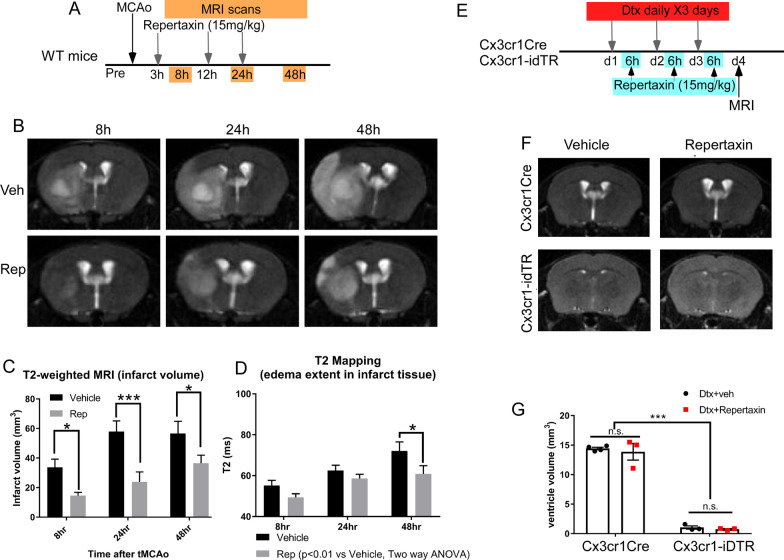Fig. 6.
Inhibition of the KC/Gro pathway reduces stroke infarct volume and edema but does not reverse the CSF/ventricle shrinkage phenotype in the genetic microglia ablation model. A experimental timeline for stroke experiment. B Representative T2-weighted MRI imaging of vehicle or Repertaxin (Rep) treated mice at 8, 24 and 48 h after stroke. C infarct volume measured by T2-weighted MRI images showed decreased infarct volume in Repertaxin treated mice (n = 9) compared to Vehicle treated mice (n = 6). D Repertaxin treatment also decreased the T2 relaxation time, which is consistent with a reduction in water content. (Two- way ANOVA, treatment p < 0.001 for infarct volume and p < 0.01 for T2 mapping. * or ** and *** indicates p < 0.05, 0.01 and 0.001 for Bonferroni post-hoc tests for repeated measurements). E Experimental timeline for genetic microglia ablation and Repertaxin treatment. F Representative T2-weighted MRI images showing shrinkage of CSF/ventricular spaces in vehicle and Repertaxin treated microglia ablated mouse brain. G MRI image-based quantification of the ventricular volume in control and genetic microglia ablated mice treated with vehicle or Repertaxin using serial coronal sections of T2-weighted MRI after 3 days of Dtx treatment. (n = 3–4 for each group, Mean + SEM, ***p < 0.001, two-way ANOVA with Tukey post-hoc analysis). Data were pooled from two independent experiments showing similar results for both experimental paradigms

